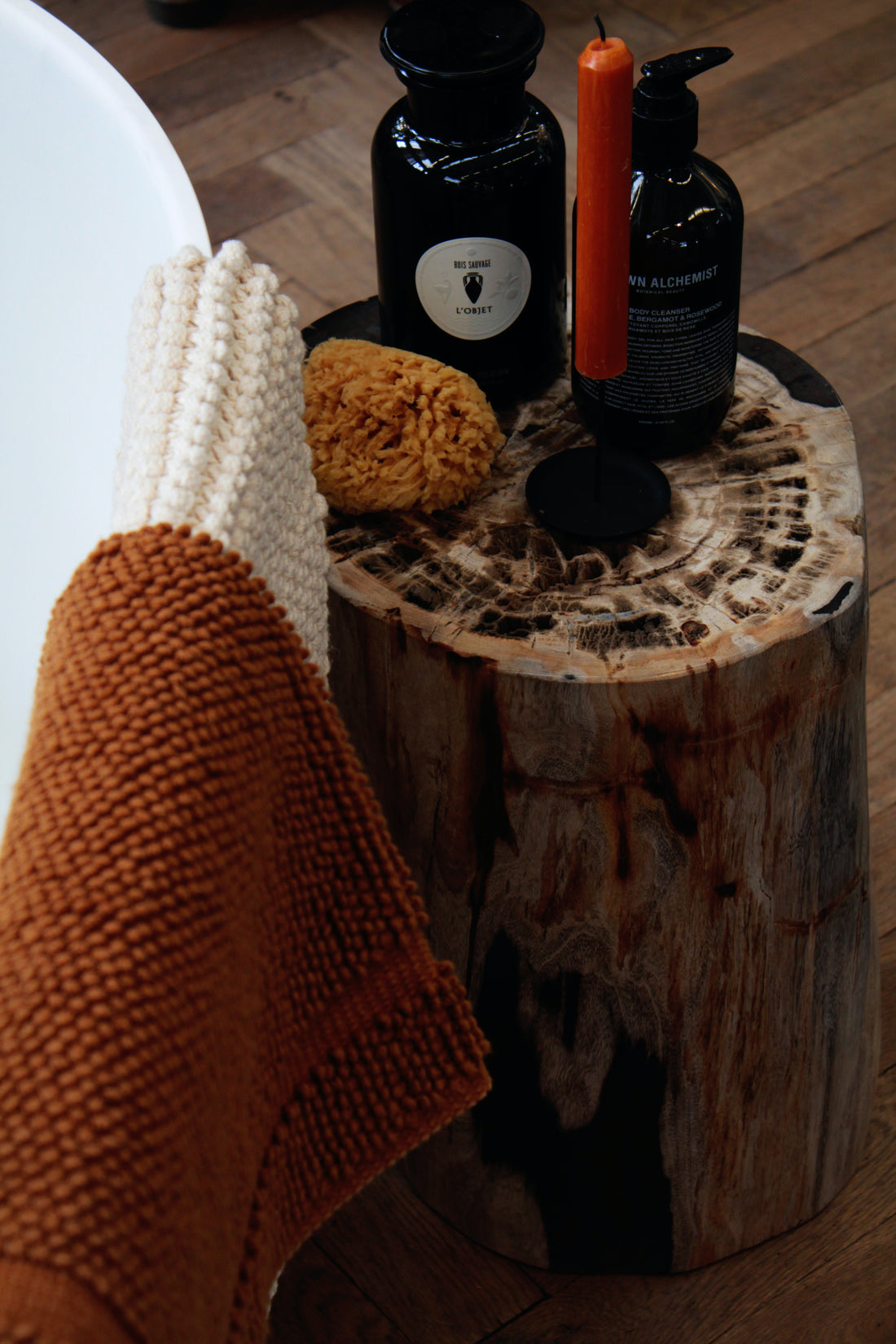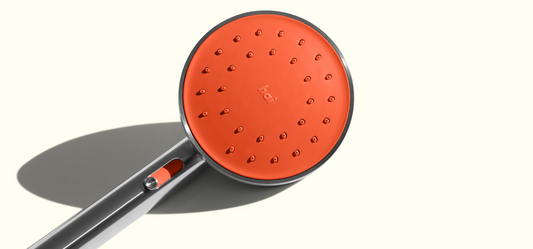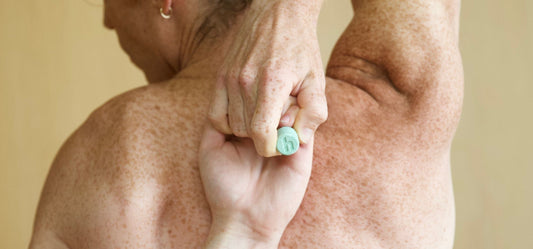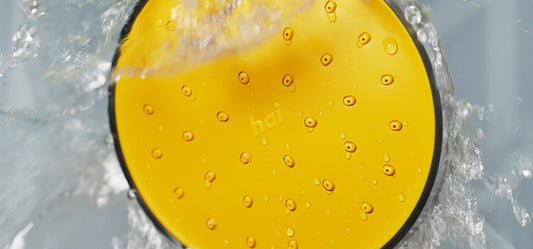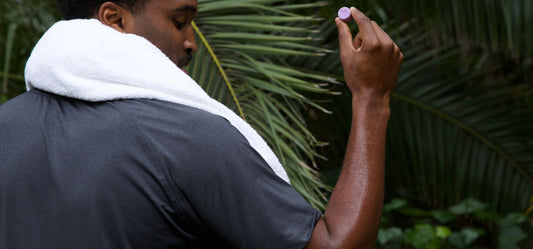The benefits of adding exfoliation to your shower routine
Even if you're a dedicated skincare aficionado, you might sometimes forget the importance of taking care of the skin beyond your face. But everything below your neck deserves love too. While the skin on your arms, legs, and torso might have different needs from the skin on your face, it can still benefit from exfoliation. Get the most out of your showers and banish dull skin with these exfoliation tips.
Why should you add exfoliation to your shower routine?
There are loads of benefits to full-body exfoliation. Sloughing off layers of dead skin promotes cell turnover, revealing the smoother and more glowing skin beneath. And it can increase blood flow to the outermost layer of your skin so it looks healthier and more supple. Exfoliation also decreases the appearance of wrinkles. Yup. Wrinkles happen on your body too.
Exfoliation is good for all skin types, including oily skin, acne-prone skin (it's great for clogged pores), combination skin, and dry or sensitive skin. That said, it's important to tailor your exfoliation to your skin to avoid irritation. For example, people with dry or aging skin should use a gentler exfoliant than those with oilier skin.
How often should you exfoliate your body?
Depending on your skin type and how often you shower, you may need to exfoliate every day or two, or only once a week. Aging skin can be particularly delicate, so less frequent exfoliation may be key to avoiding irritation. Start out exfoliating once or twice a week and adjust from there based on how your body reacts.
What are the types of exfoliants?
There are two types of exfoliants: physical and chemical. Let’s dive into the benefits of both and explore some ways to do them. No matter what method you choose, always incorporate an SPF into your skincare routine. That glowing new skin exposed by exfoliation can be particularly prone to sunburn.

Physical exfoliation to remove dead skin cells
Let’s start with physical exfoliation. This method manually removes dead skin cells using friction. You can do this with tools like washcloths, loofahs, sponges, and brushes, or with products that contain exfoliating particles.
Try dry body brushing
Dry brushing first became an Internet sensation a few years ago and has maintained its popularity due to the myriad benefits promised by its devotees: exfoliation, increased circulation, detoxification, improved digestion, lymphatic drainage, and even reduction in improved appearance of cellulite.
While some of those claims aren't backed by science, the skincare benefits are real. The stiff bristles and mechanical action of brushing physically remove dead cells and unclog pores. Dry brushing also increases blood circulation to your skin's outer layers.
Dry body brushing is simple. All you need is your skin and a quality body brush. It’s best to dry brush right before you shower so you can rinse off any dry skin afterward.
Before dry brushing, speak to your doctor if you have special health conditions, including heart or circulatory problems.

Chemical exfoliation
Chemical exfoliators, like salicylic acid and glycolic acid, use potent active ingredients to promote cell turnover by breaking down the bonds that hold dead skin cells together. Chemical exfoliants can be gentler on the skin since they don't rely on physical abrasion, but use acids like lactic acid and alpha hydroxy acid (AHA) carefully since they can cause sensitivity.
Try incorporating acids
Many of the most effective exfoliating products rely on acids to get the job done. Two of the most popular are AHAs and geta-hydroxy acids (BHAs).
Water-soluble AHAs gently loosen the upper layers of skin to help fade dark spots and even out rough patches. More intense AHAs, like glycolic acid, can penetrate deep into the skin to rebuild collagen in addition to improving texture and tone.
BHAs are oil-soluble, which allows them to go deeper into the pores than AHAs to whisk away impurities and sebum. Popular BHAs include azelaic acid, which is antibacterial and anti-inflammatory, salicylic acid, which penetrates deep into pores to unblock any congestion and even out skin tone.
The best of both worlds
Wondering if you can incorporate both physical and chemical exfoliation into your regimen? For most skin types (except for skin that’s super-sensitive or prone to severe acne), the answer is yes.
Try body scrubs
Body scrubs often combine physical and chemical exfoliation. Ingredients like sugar or salt generate friction to remove dead skin cells and draw moisture into the skin, while acids like those mentioned above encourage cell turnover.
Body scrubs range in texture from gritty to powdery to nearly smooth. The correct scrub for you depends on your skin type. A finer texture is better for more sensitive skin. Scrubs with sandier textures work well for people with oily and combination skin that won’t dry out.
Look for scrubs that combine exfoliants with other skin-boosting ingredients, like shea butter for moisture or niacinamide for soothing. Freshly exfoliated skin is particularly good at absorbing the active ingredients in skin care products.
Be careful not to overdo it with scrubs. They can damage your skin if used too frequently or forcefully. Always massage gently and immediately stop using any product that irritates your skin.

The best exfoliant for your skin type
Now that you know all about the different types of exfoliants, it’s time to figure out which one is right for your skin type.
If you have oily skin...
Look for products with BHAs like salicylic acid. These ingredients help to unclog pores and reduce oil production. If your oily skin is also acne-prone, be careful with physical scrubs. They can cause existing breakouts to rupture and spread bacteria, leading to more breakouts.
If you have dry skin...
Opt for a gentle physical exfoliant like bamboo powder combined with lots of hydrating ingredients. It's important to maintain your skin's barrier to protect it against the elements and other irritants. This combo helps do just that.
If you have sensitive skin...
Choose products with polyhydroxy acids or milder alpha-hydroxy acids like mandelic acid. These ingredients will help to exfoliate without causing irritation. Be careful not to overdo it. Frequent exfoliation can lead to increased sensitivity.
If you have combination skin...
Glycolic acid, a plant-based acid that has the smallest molecular weight of all AHAs, works deep down in pores to dissolve any excess oil and dead skin cells. It works well for both dry and oily skin types, making it perfect for skin that's a little bit of both.
How to make your own DIY body scrub
Try this easy DIY recipe from Heal Your Skin: The Breakthrough Plan for Renewal by Dr. Ava Shamban.
Avocado Honey Body Scrub
½ avocado
2 tbsp. cornmeal
3 tsp. honey
Combine all three ingredients in a bowl, mashing them together to form a well-mixed paste. Dampen your skin, then gently massage it with the paste. Use warm water to rinse it all off and you’re done!




